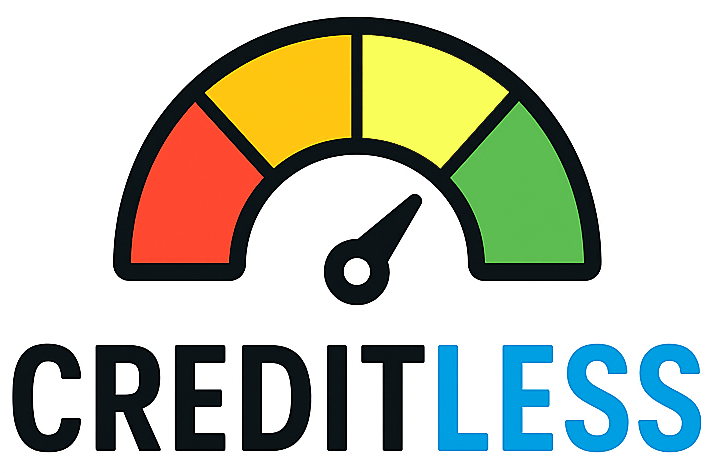Why a secured card — and why details matter in 2025
Secured credit cards remain one of the fastest, lowest‑risk ways to establish or rebuild credit: you place a refundable security deposit that typically becomes your credit limit, then build a payment history that many scoring models can use. However, not all secured cards are created equal — differences in reporting, fees, deposit rules and upgrade pathways determine how quickly you’ll see score gains and whether you’ll later qualify for an unsecured card.
This guide walks through the specific features to prioritize, how to compare costs and reporting, and practical steps to maximize the credit benefit while minimizing cost in 2025.
Key features to evaluate — the decision checklist
1) Does the issuer report to all three credit bureaus?
Reporting is the single most important attribute for a secured card. Cards that report to Experian, TransUnion and Equifax give you the broadest benefit because different lenders and scoring models use different bureaus. Make this your first filter: if an issuer reports to one or two bureaus only, your credit‑building benefit will be narrower.
2) Deposit minimum and how the limit is set
Secured card deposits commonly start around $200 but can range from low‑deposit options ($49–$200 for special issuer offers) up to several thousand dollars for higher limits. A larger deposit gives you a higher credit limit (good for keeping utilization low), but it ties up cash — balance the deposit size against how much liquidity you can spare. Recent market comparisons show many consumer favorites still start around $200–$500.
3) Fees and APR — avoid unnecessary costs
Annual fees for secured cards vary: many top options charge $0, while others assess modest fees (often $25–$50); APRs also vary widely and can be high if you carry a balance. If your goal is credit building, treat the card as a charge‑and‑pay‑in‑full tool; prioritize no‑fee cards and low APRs in case of accidental carryover. Compare fine print for cash advance, foreign transaction and processing fees before applying.
4) Upgrade (graduation) policy and timeline
If your objective is to move to a regular (unsecured) credit card, check whether the issuer offers automatic reviews or internal upgrade paths. Some issuers (and some popular secured cards) review accounts after a period of on‑time payments and may return your deposit and convert the account to unsecured; upgrade timing and guarantees vary by issuer and are never absolute. Confirm whether a deposit refund is automatic on upgrade, and whether you must request the upgrade.
5) Rewards and perks — useful but secondary
A few secured cards offer rewards (cash back or points), but rewards should be a secondary consideration for most first‑time builders — the credit reporting and fees carry more weight for long‑term progress. If a rewards secured card has zero annual fee, it can be a strong option.
How to compare offers — a practical scoring method
Use a simple weighted checklist to compare two or three cards side‑by‑side:
- Reporting (30%): 3‑bureau reporting = full points; 1–2 bureaus = partial points.
- Fees (25%): annual fee, origination/processing fees and other recurring costs.
- Deposit cost & limit (20%): how much cash you must lock up vs. the resulting credit limit.
- Upgrade path (15%): explicit review period or stated upgrade policy.
- Perks & convenience (10%): rewards, mobile app, alerts, fraud protections.
Example: a no‑fee card that reports to all three bureaus with a $200 deposit typically beats a $25‑fee card that reports to only one bureau — even if the latter advertises rewards. Recent editorial roundups and comparison tables from consumer sites list Discover, Capital One and several credit‑union secured cards as consistent top picks because they combine 3‑bureau reporting, low fees and clear upgrade policies. Confirm current details on issuers’ pages before applying.
Practical tip: call the issuer and ask, “Do you report secured card accounts to Equifax, Experian and TransUnion?” Get the answer in writing (email or a screenshot of the issuer’s policy) when possible — reporting policies can change.
Using the card to build credit — timeline and best practices
How quickly a secured card helps depends on responsible behavior: make on‑time payments, keep utilization low (aim for under 30%, ideally under 10–20%), and avoid rolling balances. Credit file improvements are often visible within a few months, but meaningful score changes commonly take 6–12 months of consistent behavior. Monitor all three credit reports and scores while you build.
Steps to maximize impact
- Confirm 3‑bureau reporting before you apply.
- Use the card for a small recurring purchase (streaming, groceries) and set autopay to pay the balance in full each month.
- Keep reported balance low relative to limit — make multiple payments during the cycle if you need to lower the balance when the issuer reports statement balances.
- Track credit reports (AnnualCreditReport.com) and dispute any reporting errors promptly.
- After 6–12 months of on‑time payments, ask the issuer about a credit limit increase or conversion to an unsecured product; some issuers perform automatic reviews and may upgrade you without a new hard inquiry, while others require you to apply.
Bottom line: pick a secured card that reports to all three bureaus, minimizes fees, fits your deposit capability, and offers a clear upgrade path — then use it predictably and pay on time. That combination gives you the best chance to improve your credit score efficiently while keeping costs low.
Need help comparing current offers? If you’d like, we can pull a short comparison of 3–5 secured cards available to U.S. applicants today and highlight deposit, fee, APR and reporting info so you can pick the best fit.
